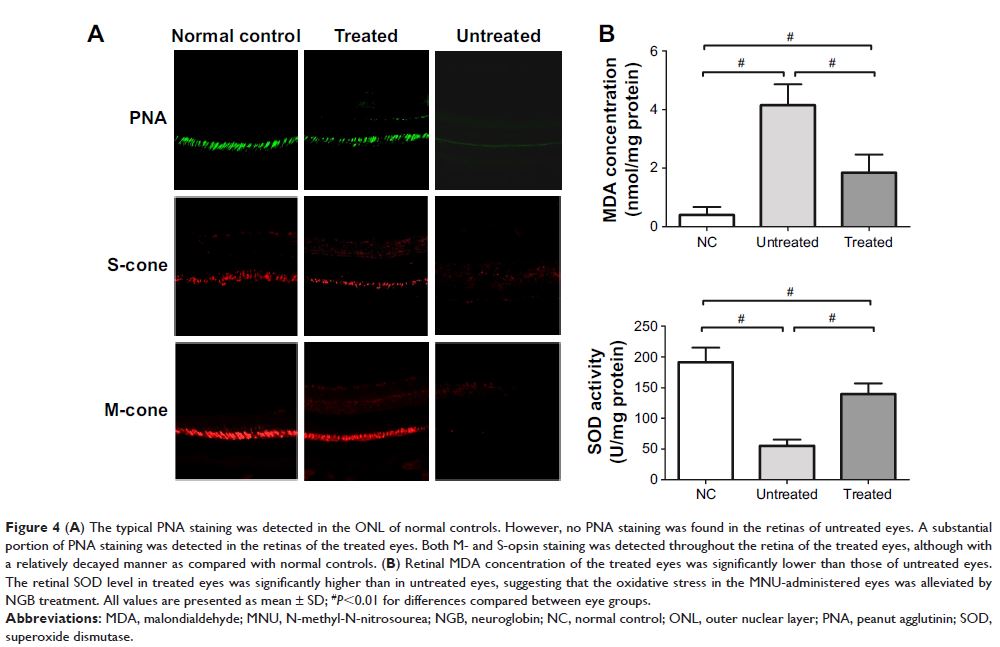9 7 8 1 6
论文已发表
注册即可获取德孚的最新动态
IF 收录期刊
- 3.3 Breast Cancer (Dove Med Press)
- 3.4 Clin Epidemiol
- 2.5 Cancer Manag Res
- 2.9 Infect Drug Resist
- 3.5 Clin Interv Aging
- 4.7 Drug Des Dev Ther
- 2.7 Int J Chronic Obstr
- 6.6 Int J Nanomed
- 2.5 Int J Women's Health
- 2.5 Neuropsych Dis Treat
- 2.7 OncoTargets Ther
- 2.0 Patient Prefer Adher
- 2.3 Ther Clin Risk Manag
- 2.5 J Pain Res
- 2.8 Diabet Metab Synd Ob
- 2.8 Psychol Res Behav Ma
- 3.0 Nat Sci Sleep
- 1.8 Pharmgenomics Pers Med
- 2.7 Risk Manag Healthc Policy
- 4.2 J Inflamm Res
- 2.1 Int J Gen Med
- 4.2 J Hepatocell Carcinoma
- 3.7 J Asthma Allergy
- 1.9 Clin Cosmet Investig Dermatol
- 2.7 J Multidiscip Healthc

腺相关病毒介导的神经球蛋白过表达可改善 N-甲基-N-亚硝脲诱导的视网膜损伤:光感受器退化的新型治疗策略
Authors Tao Y, Yang Z, Fang W, Ma Z, Huang YF, Li Z
Received 25 June 2017
Accepted for publication 4 September 2017
Published 13 October 2017 Volume 2017:13 Pages 1379—1389
DOI https://doi.org/10.2147/TCRM.S144822
Checked for plagiarism Yes
Review by Single-blind
Peer reviewers approved by Dr Hoa Le
Peer reviewer comments 2
Editor who approved publication: Professor Deyun Wang
Abstract: Retinal degeneration (RD) is
a heterogeneous group of inherited dystrophies leading to blindness. The
N-methyl-N-nitrosourea (MNU)-administered mouse is used as a pharmacologically
induced RD animal model in various therapeutic investigations. The present
study found the retinal neuroglobin (NGB) expression in the MNU-administered
mice was significantly lower than in normal controls, suggesting NGB was
correlated with RD. Subsequently, an adeno-associated virus (AAV)-2-mCMV-NGB
vector was delivered into the subretinal space of the MNU-administered mice.
The retinal NGB expression of the treated eye was upregulated significantly in
both protein and mRNA levels. Further, we found NGB overexpression could
alleviate visual impairments and morphological devastations in MNU-administered
mice. NGB overexpression could rectify apoptotic abnormalities and ameliorate
oxidative stress in MNU-administered mice, thereby promoting photoreceptor
survival. The cone photoreceptors in MNU-administered mice were also sensitive
to AAV-mediated NGB overexpression. Taken together, our findings suggest that
manipulating NGB bioactivity via gene therapy may represent a novel therapeutic
strategy against RD. Future elucidation of the exact role of NGB would advance
our knowledge about the pathological mechanisms underlying RD.
Keywords: neuroglobin,
retinal degeneration, photoreceptor
